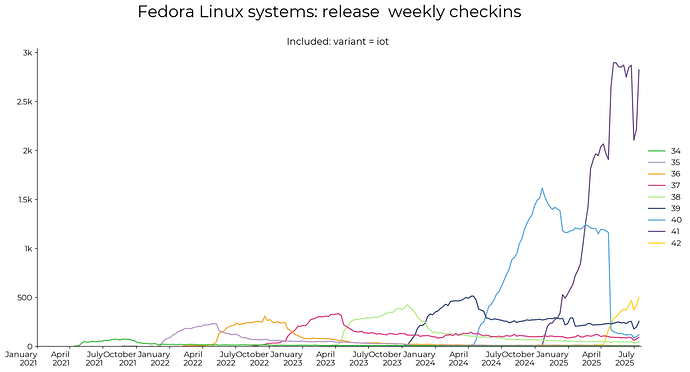Hi everyone, this is a suggestion to consider a change to the Fedora Editions. It is related to a wide set of changes that Fedora Quality team need to perform this cycle, which are summarized here, so please feel free to read that for more background information and general overview, thanks.
Proposal: Re-consider whether Fedora IoT merits Edition status.
Justification: When Fedora.next happened in 2014, we had three Editions: Workstation, Server, and Cloud. These clearly covered the three major use cases for Fedora at the time. Since then, we have kept on accumulating Editions over time. We now have six Editions - Workstation, Server, Cloud, IoT, CoreOS, and KDE Plasma Desktop - and one “emerging” Edition - Silverblue. This feels like too many editions.
IoT seems to have a degree of overlap with CoreOS. IoT has a clearer focus on hardware deployment via FDO (now, formerly it was via Zezere), but other than that, both are intended as minimal platforms for deploying container-based workloads. Of the two, IoT seems to have less maintainer support (we believe just two maintainers) and arguably less usage and mindshare. Looking at countme stats as of the end of July 2025, Workstation had about 200k active checkins weekly, KDE about 146k, CoreOS 107k, Server 49k. IoT had just under 4k, substantially less than any other edition, and about half of Silverblue (which is not an Edition).
There is an interesting spike of IoT usage since Fedora 40, indicating there is some company that deployed it to at least a thousand systems. However, the absolute numbers are still very low compared to other Editions.
Our primary concern as the Quality team is the amount of work it takes to maintain criteria and test cases, deal with the release process, and run manual tests and diagnose failures. For all these reasons we would like to see the number of Editions start going down, and IoT seems like the clearest candidate to be reconsidered. But we think this would also be beneficial overall - too many Editions also causes a burden on other teams, and is confusing for users and contributors.

